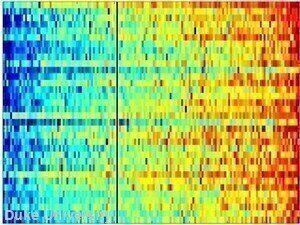-
 Two-dimensional gel electrophoresis using cyanine dye fluorescence has helped Chinese researchers identify a melanoma biomarker and predictor
Two-dimensional gel electrophoresis using cyanine dye fluorescence has helped Chinese researchers identify a melanoma biomarker and predictor
Electrophoretic Separations
Electrophoretic fluorescence used to seek melanoma biomarkers
Sep 03 2010
Researchers from Tianjin Medical University and Tianjen Children's Hospital in China explain in the Journal of Experimental & Clinical Cancer Research that high incidences of malignant melanoma have created a need for more detailed understanding of melanoma metastasis.
This, they write, is the most formidable problem in a form of neoplasm that continues to occur at a high worldwide incidence rate.
Using electrophoresis, they were able to use fluorescence of cyanine dyes to study multiple samples in a single two-dimensional gel.
They identified vimentin, a cytoskeleton structural protein, as both a biomarker for melanoma and also as a clinical predictor for hematogenous metastasis.
The Journal of Experimental & Clinical Cancer Research is the official periodical of the Regina Elena National Cancer Institute, providing an online forum for oncology findings from clinical and translational work.
Digital Edition
Chromatography Today - Buyers' Guide 2022
October 2023
In This Edition Modern & Practical Applications - Accelerating ADC Development with Mass Spectrometry - Implementing High-Resolution Ion Mobility into Peptide Mapping Workflows Chromatogr...
View all digital editions
Events
ACS National Meeting - Fall 2024
Aug 18 2024 Denver, CO, USA
Sep 04 2024 Chiba, Tokyo, Japan
Sep 04 2024 University of Warwick, Coventry, UK
Sep 10 2024 Rockville, MD, USA
Plastics Recycling World Expo Europe
Sep 11 2024 Brussels, Belgium













